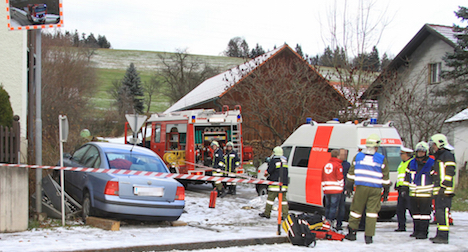According to a report from the news daily Heute, police in several states throughout Austria have reported traffic accidents, some with injuries.
The Tauern highway in Salzburg and Carinthia saw several minor accidents, and a 7km long traffic jam, as three southbound tunnels were closed for at least an hour.

Long queues of traffic on the Tauern highway. Photo: APA
In Lower Austria, a car slid off the road, and crashed into a power distribution box.
The incident occurred shortly before noon in the town of Kaumberg, when the driver lost control, leading to the vehicle destroying the power transformer. The injured driver was rescued from her car by firefighters, then taken to a nearby hospital in Lilienfeld. A passenger in the car had already freed himself.
In Kirchberg, Tirol, a 35-year-old driver was able to jump out of his truck before it crashed 150m down a cliff. Despite snow chains, the truck started an uncontrolled slide on a steep section of road. The driver was uninjured, and the truck was stopped by a tree.
In another incident between the towns of Sonntag and Fontanella in Großwalsertal, Vorarlberg, a 47-year-old driver went over a cliff, falling some 80m down a steep slope. The car rolled over several times, but fortunately, the driver was uninjured.
Finally, on the L211 in Gnas in Styria, a car came off the road near the towns of Fischa and Pernreith, overturning and ending up 40m in a grain field. The driver and his passenger were both injured, and taken by the Red Cross to a hospital in the nearby hospital in Feldbach.

The vehicle ended in a field by the L211 in Gnas. Photo: APA (FEUERWEHR/Karner)



 Please whitelist us to continue reading.
Please whitelist us to continue reading.
Member comments